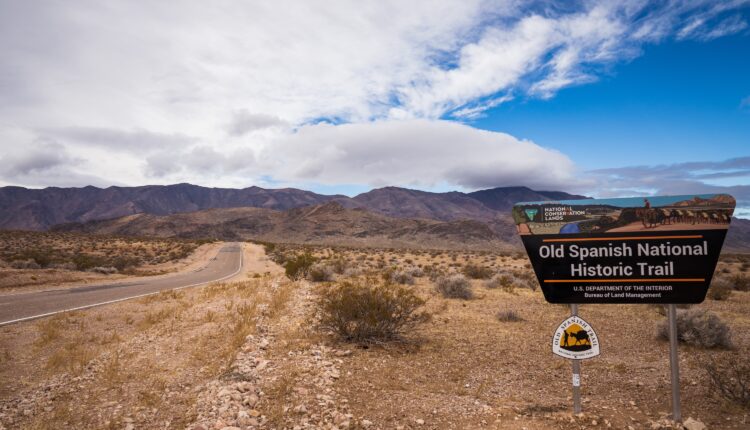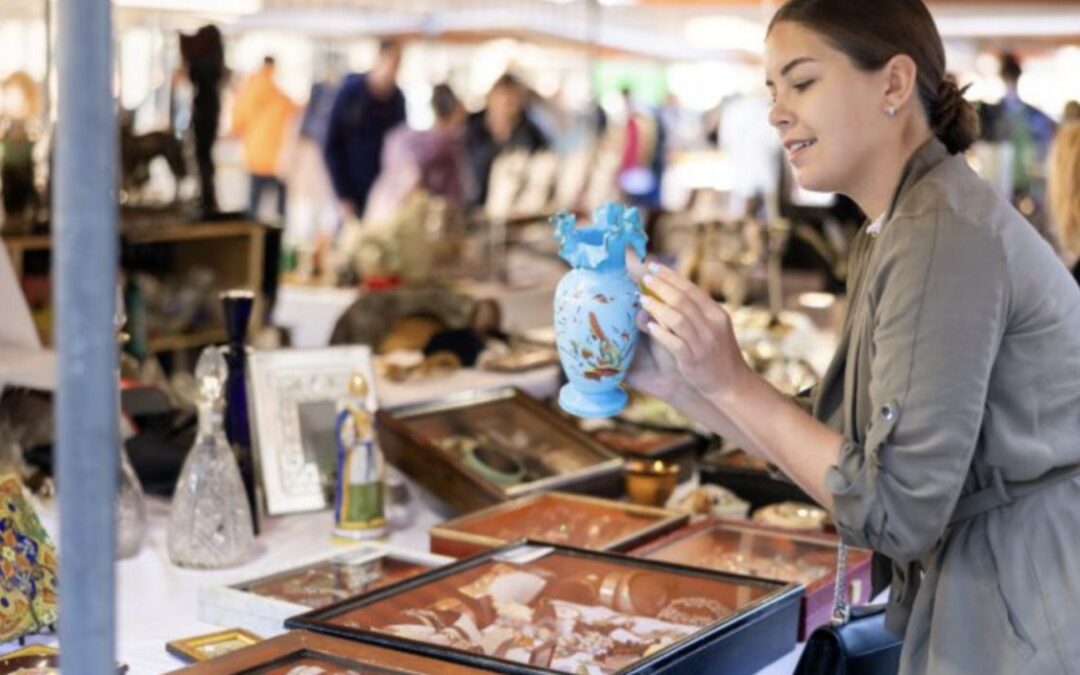
Photo courtesy of Bureau of Land Management California.
Nearly 200 years ago, Spanish explorer Antonio Mariano Armijo led a 2,700-mile expedition of men and mules on an uncharted path across New Mexico, Colorado, Utah, Arizona, Nevada, and California.
That trek helped establish a multi-state trade route known as The Old Spanish Trail.
In the years to follow (1830-1850), this evolving trail allowed passage between the states for traders, Mormon settlers, early gold rush pioneers, and even horse thieves.
It is now commemorated in the states it crossed by street and park names, museums, landmarks, and historical markers; eight of which are found in Clark County cities including Mesquite, Moapa Valley, and Las Vegas.
The 135-stretch of the historic trail that cut through Southern Nevada was added to the National Register of Historic Places in 2001. The trail as a whole was designated as the Old Spanish National Historic Trail by Congress in 2002.
Here are a few places to visit in the Las Vegas area to learn more about this historic trail and walk in the footsteps of the brave explorers who once traversed it.
Lost City Museum
721 S Moapa Valley Blvd, Overton

Photo courtesy of Lost City Museum via Facebook.
As the Old Spanish Trail entered Nevada, it bordered modern-day Valley of Fire State Park on the north side of what is now known as the Lake Mead National Recreation Area.
While the trail ran a few miles north of Overton, the small town’s Lost City Museum is a good place to kick off your journey if you’re looking for a little history. Many of the footpaths followed by the Spanish explorers were originally utilized by American Indians, and the Lost City Museum’s exhibits on the Anasazi and Paiute people help paint a fuller picture of the area’s early landscape and culture.
Springs Preserve
333 S. Valley View Blvd., Las Vegas

Photo courtesy of Springs Preserve via Facebook.
During Armijo’s arduous expedition, a young explorer named Rafael Rivera changed the course of history when he discovered springs and meadows in what we now know as Las Vegas.
As the story goes, he got lost on Christmas Day and spent two weeks wandering on his own, eventually discovering a mesa–now home to the Southeast Career and Technical Academy. The mesa allowed him to see much-desired water and grass in the distance.
When reunited with his party, Rivera led them to the area, which they named Las Vegas (the meadows in Spanish). It is now the site of the 180-acre Springs Preserve, a cultural attraction with museums, galleries, gardens, and wetland trails – as well as the Nevada State Museum — dedicated to celebrating the history and future of Las Vegas.
Old Spanish Trail Park
8150 Tara Ave., Las Vegas
A community park with play structures, grassy areas, and walking trails in a residential area of Las Vegas, Old Spanish Trail Park is in the unique position of providing visitors with rest, relaxation, outdoor recreation opportunities, and a history lesson.
In addition to regular park activities, you can walk in the path of the early explorers and learn stories about the Old Spanish Trail from a series of educational displays. The displays cover a wide variety of topics including lessons on the area’s early indigenous settlers, the charting of the trail in 1845 by U.S. Captain John C. Fremont, and the use of the trail by the Mormon Battalion during the Mexican War in 1846.
Late Night Trailhead
State Route 160/Pahrump Valley Highway, Las Vegas

Photo courtesy of the National park Service.
Another place to walk on a historic path is the Late Night Trailhead at Mountain Springs Pass in the 23,000-acre Cottonwood Valley Recreation Area of Red Rock Canyon.
Located off Nevada State Road 160, at the Cottonwood Valley Road exit, this area was discovered by Armijo and his explorers in 1830 and took two days to cross, according to the Nevada State Historic Preservation Office.
Today the trailhead provides access to 35 miles of designated trails, ranging from easy to strenuous. You won’t find any trace of the original trail, but you may spot a desert tortoise, wild horses, and burros.
You’ll also find restrooms and educational exhibits relating to the story of the Old Spanish Trail. A sign with large, metal mule silhouettes marks the entrance along with Nevada State Historical Marker No. 142 for the Old Spanish Trail (Mountain Spring Pass).
According to the sign, the springs just north of the marker, in the town now known as Blue Diamond, served as a water source for the explorers while the meadows fed their animals:
“The trip was broken at Cottonwood Springs, the site of Blue Diamond, where an early start was usually made in order to climb the pass by nightfall. Early travelers often referred to the area as Paiute Springs, but the present title has been used for over a century. The altitude made Mountain Springs one of the favorite camping spots on the Trail.”
Parking for the pet-friendly Late Night Trailhead is available in an area along SR-160, also known as the Pahrump Valley Highway, 15 miles west of where it intersects with Interstate-15.
Additional Resources
- Old Spanish Trail Association This organization is devoted to protecting and promoting the Old Spanish Historic Trail and related routes.
- Old Spanish Trail Official Map: A National Park Service map and guide to the Old Spanish Trail.
- Old Las Vegas Mormon Fort State Historic Park: Learn more about early Mormon travelers who passed through or settled in Nevada in the mid-1800s using the Old Spanish Trail.
- Old Spanish National Trail Historical Markers: Locate all the historical markers pertaining to the Old Spanish Trail.
This article first appeared on Good Info News Wire and is republished here under a Creative Commons license.

Los grandes festivales que no te puedes perder en Nevada antes de que acabe 2025
Por Sofia De La Espriella Nevada empieza el último tramo del año con una agenda vibrante que combina música, sabores, arte y experiencias únicas....

Northern Nevada leaf peeping guide: Where to see fall colors
Shades of orange, red, and gold fill Northern Nevada in autumn. Here are some of the best places to go leaf peeping this fall. Sunny days are...

Things to do in Nevada this weekend (Aug. 15-17)
This first appeared in The Nevadan newsletter. Sign up here. Are you down for some dancing or learning something new? Whether you're looking for...

Things to do in Nevada this weekend (Aug. 8-10)
Looking for something to do this weekend? Or even during the week? Whether you're in Reno or Las Vegas, our community is always active—from roller...

Things to do in Nevada this weekend (Aug. 1-3)
From art and community fun to outdoor adventure and live theater, there’s something for everyone this weekend from southern to northern Nevada....

Things to do in Nevada this weekend (July 18-20)
Looking for something fun to do this weekend? From family movie nights under the stars to hands-on science and art experiences—and even an...





